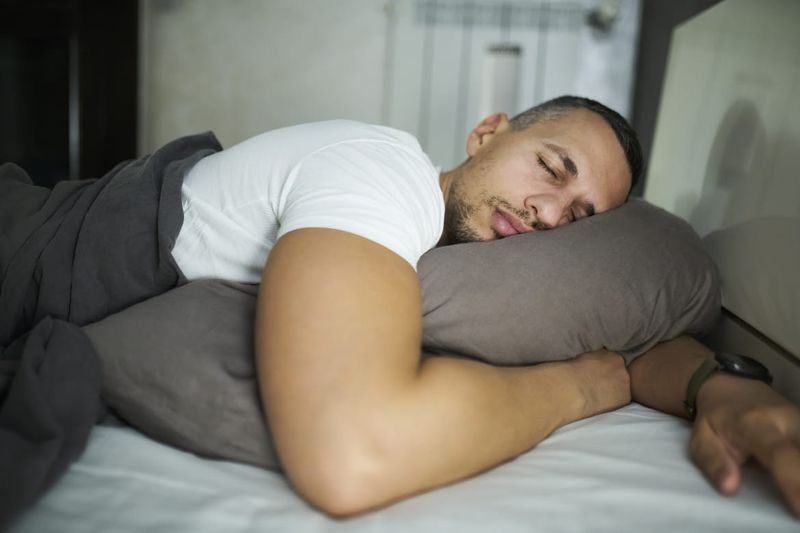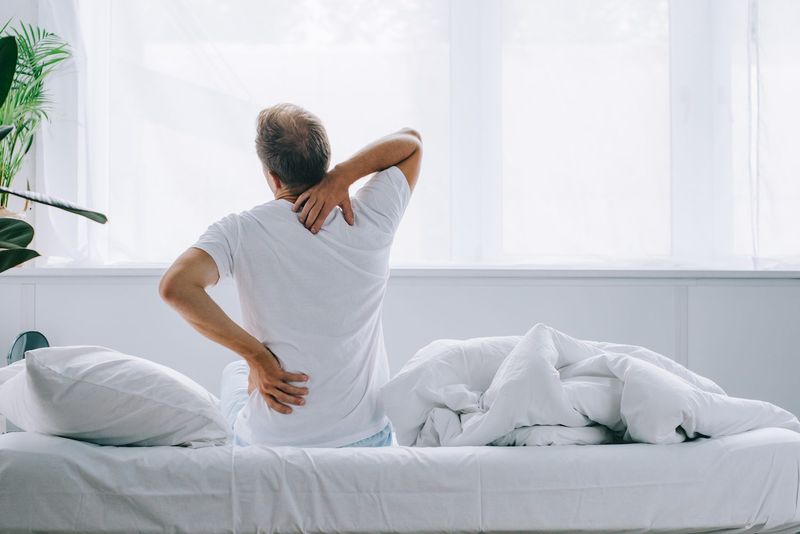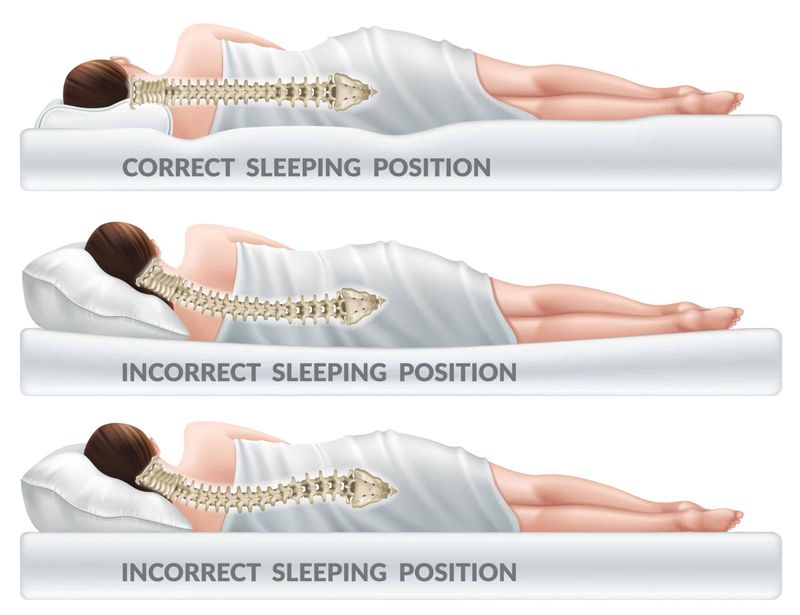Your sleeping position can provide insights into various health issues your body may be silently addressing. By understanding how different sleep postures relate to specific health concerns, you can take proactive steps to alleviate discomfort and promote better overall well-being. Sleep is a vital component of our daily lives, influencing everything from our physical health to our mental clarity. As we rest, our bodies continue to work, often revealing hidden ailments that manifest through our chosen sleeping positions. Here’s how your nightly posture might be a silent messenger, alerting you to potential health issues.
1. Sleeping on Your Back (Supine Position)

Sleeping on your back can sometimes be a double-edged sword. While it allows your head, neck, and spine to rest in a neutral position, it might also contribute to snoring and sleep apnea. This happens because gravity can cause the tongue to block the airway. Additionally, being flat on your back can lead to acid reflux, where stomach acid creeps into the esophagus. Elevating the head or sleeping slightly inclined can mitigate these issues, offering a peaceful slumber. To keep your spine perfectly aligned, consider a supportive mattress that caters to your back’s natural curves.
2. Sleeping on Your Side

Ever noticed how curling up on your side feels comforting? This position is often recommended for pregnant women, as it promotes optimal blood flow to the uterus. It can also benefit those with heart conditions, enhancing circulation and reducing pressure on the heart. Left-side sleeping is particularly beneficial for digestive health, helping to alleviate acid reflux. However, side sleepers might experience shoulder or hip discomfort. Using a thick pillow between the knees can help maintain alignment, ensuring that sleep remains restorative without compromising comfort or health.
3. Sleeping in the Fetal Position

The fetal position often evokes a sense of security and warmth, reminiscent of the womb. However, curling too tightly can lead to strain on the spine and back muscles. It might also restrict deep breathing. Those who adopt this position frequently should aim for a relaxed curl, allowing space for the diaphragm to move freely. A medium-firm mattress can provide the necessary support to prevent morning stiffness. This position can be particularly cozy during colder months, wrapping you in a cocoon-like embrace for a restful night’s sleep.
4. Sleeping on Your Stomach (Prone Position)

Prone sleepers might find solace in the embrace of their mattress, but this position often leads to neck and back pain due to spinal misalignment. Breathing can also become shallow, as the chest is compressed. To counter these effects, consider using a thin pillow or forgo one entirely. This can help alleviate pressure on the neck. Breathing exercises before bed can enhance lung capacity and ensure oxygen flows freely during the night. Despite its drawbacks, some find this position comforting, akin to basking in the warmth of the morning sun.
5. Sleeping with Arms Under Pillow

Nestling your arms under your pillow can feel cozy, but it might lead to nerve compression over time. This position can strain the shoulder and restrict blood flow, causing numbness or tingling sensations in the arms. To prevent such issues, try placing arms at your side or use a specially designed pillow that allows for comfortable arm positioning. A change in pillow height or firmness might also alleviate pressure. Letting arms rest naturally can promote uninterrupted sleep and a refreshed wake-up, ready to tackle the day with energy and enthusiasm.
6. Sleeping with Legs Splayed Out (Feet in “V” Position)

The splayed leg position, although casual, can lead to unexpected aches. This posture may stress the lower back and hips, resulting in discomfort. Keeping the legs in a neutral position minimizes stress on the lumbar region and promotes muscle relaxation. If you’re prone to sleeping in this manner, consider a memory foam mattress that offers targeted support. A pillow placed between the knees might also prevent morning soreness. By aligning your posture, not only can you enjoy a restful sleep, but also wake up free from unnecessary aches and strains.
7. Sleeping with Twisted Torso

A twisted torso during sleep can whisper tales of imbalance. It often results in spinal misalignment, increasing the risk of scoliosis or other back issues. To counteract these effects, ensure your body remains as aligned as possible, using pillows to support the spine and maintain a neutral position. This posture, although occasionally relieving tension, can lead to muscular discomfort if left unchecked. Adjusting sleeping habits and incorporating stretching before bed can foster flexibility and mitigate potential harm. Balance in posture translates to balance in the body, promoting lasting wellness.
8. Sleeping with Unsupported Neck

Neglecting neck support might invite unwelcome strain in the morning. Whether due to an overstuffed pillow or none at all, improper support can cause stiffness and discomfort. A pillow that fits snugly between the head and shoulder can alleviate this issue, ensuring alignment with the spine. Investing in ergonomic pillows designed for specific sleeping positions can also be beneficial. As you drift into slumber, the goal is to maintain the natural curve of the neck, minimizing pressure and promoting seamless rest. Proper support can make all the difference in waking without pain.
9. Sleeping in a Reclined Position

Reclined sleeping, often in chairs, can offer temporary relief to back pain sufferers. However, it might also lead to strain on the neck and lumbar region. To offset these challenges, use additional pillows to create a supportive nest. Ensuring a natural curve in the spine is key to comfort. If reclined sleeping becomes regular, consider adjustable beds designed for this posture. By alleviating tension, restful sleep is encouraged, paving the way for a more rejuvenated morning. This position, reminiscent of a relaxing afternoon nap, can be both soothing and restorative.
10. Sleeping with Arm Under Pillow

Resting with an arm under the pillow might seem second nature, yet it poses risks of nerve compression and restricted circulation. Opting for a supportive pillow can help alleviate these pressures, allowing the arm to rest naturally. This adjustment encourages healthy blood flow and prevents discomfort. A peaceful slumber is achievable with mindful positioning, free from the constraints of numbness. The key lies in conscious choices, ensuring the body is relaxed and aligned, ready to embrace the world upon waking. Embrace the art of sleeping with care and consideration.
11. Sleeping in a Twisted Position

Twisting while sleeping can seem innocuous, yet it often leads to muscle imbalances and joint stiffness. Taking time to straighten out can prevent potential discomfort. Supporting the spine with pillows and maintaining a neutral position is crucial. This practice promotes relaxation and prevents tension buildup. Adjust your sleeping habits to foster a more harmonious night’s rest. Sleep, when embraced with care, becomes a powerful tool for recovery. By ensuring your posture is aligned, you encourage a restful cycle, where body and mind can rejuvenate without impediments.

Well, hello there!
My name is Jennifer. Besides being an orthodontist, I am a mother to 3 playful boys. In this motherhood journey, I can say I will never know everything. That’s why I always strive to read a lot, and that’s why I started writing about all the smithereens I came across so that you can have everything in one place! Enjoy and stay positive; you’ve got this!

